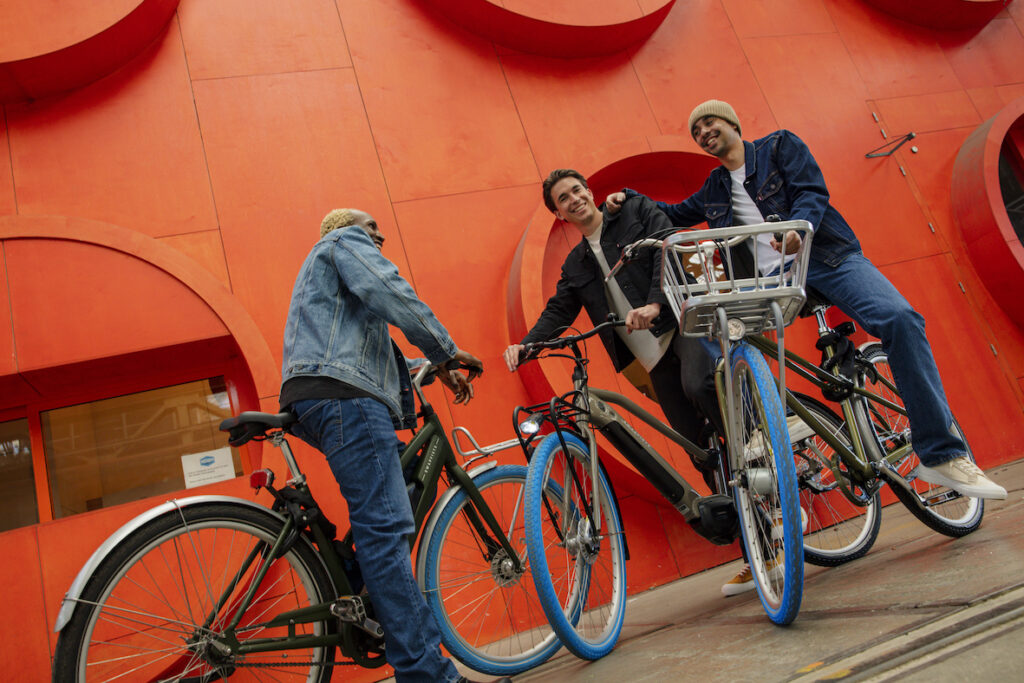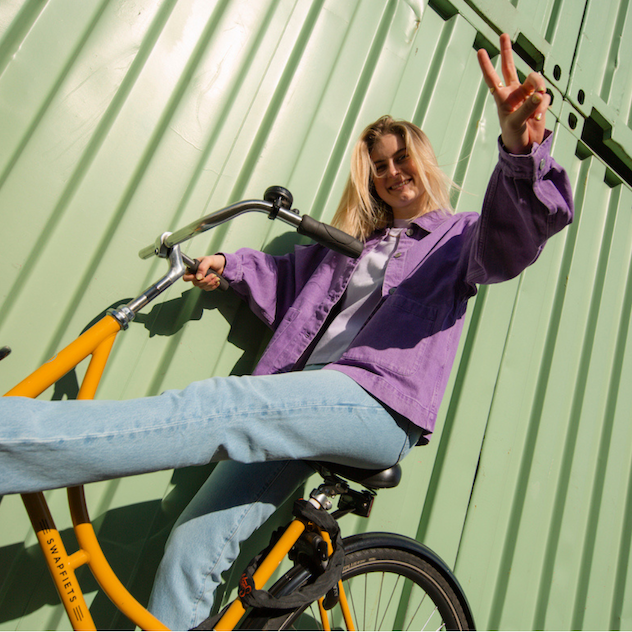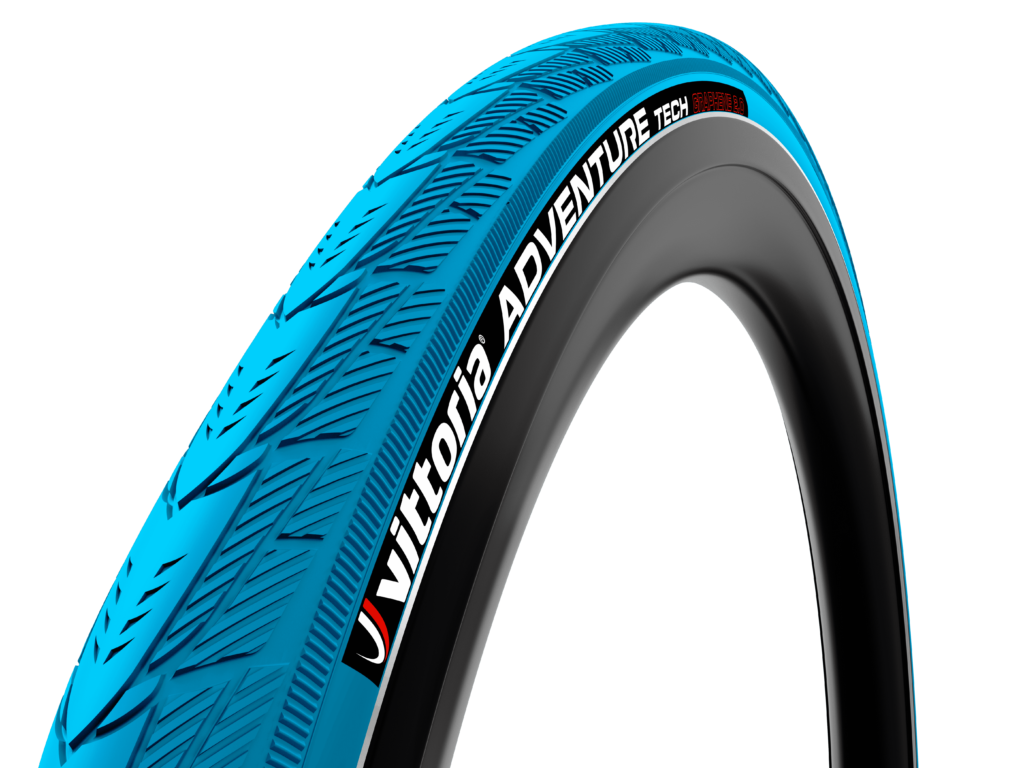Our bikes are a part of your story: they carry you to and from the library and help you zip past traffic when you’re late for work. You know what gear works best for each part of your commute and you know how smooth the ride feels after your tires are pumped for the first time in a long time. You can tie the chain around your seat post so that you can easily lock and unlock your bike and you know the faint scratch in the paint that distinguishes your olive green Swapfiets from your friend’s. But maybe what you don’t know is what life your bike has had before it becomes … well, your Swapfiets.

From using data to design the bikes and working with our suppliers to get the best parts for our bikes to repairing your beloved steed and how we get you on a working bike whenever you need one, there are many stories that perhaps you haven’t heard yet.
Over the next few weeks, we’ll zoom in on each of the sections of the story you see below. In doing so, we hope to give you a better insight into the Story of Our Bikes because we are proud to share the many lives our bikes lead and stories they help you create.
Old bikes, new-ish lives
The first chapter of our story starts in a small Dutch university town where three students recognized that people don’t just want a bike, they want to use a constantly working bike. Back then, our founders got 150 abandoned bikes from the local bike depot, fixed them up, and began to test their hypothesis that what users really want from a bike is the service – mobility – that bikes provide them with. Turns out, they were right. Within a few years, Swapfiets grew from a small operation run out of a garage to over 250,000 members across 8 countries. But what happened to those once-abandoned bikes?
Well, it turned out that having hundreds of different bikes didn’t work well with our concept, both in terms of service and in terms of circularity. It was hard to streamline repairs because the bikes were different models, required different tools, were of different age and quality or size, or needed different technical knowledge to be fixed. Sometimes a broken bike would require a specialized part that wasn’t easy to find or a repair would take longer because we’d need time to figure out exactly what was going wrong. This would mean that there’d be delays in our service. But beyond the service implications, having all these different bikes meant that we didn’t know what was going into these bikes. Because we didn’t know what the parts on the bikes were made of, it was also difficult to set up clean waste streams for any broken bikes or parts. So, whilst using abandoned bikes meant giving those bikes a second life, it also meant that we wouldn’t be able to expand our services.
From old bikes to in-house design

And so began the second chapter of our story. We realized that in order to make our service more widely accessible, we needed to standardize our bikes and build them in a way that we could update them over time without needing a brand new design each time. More specifically we needed to know everything about the bikes we put on the streets, from the parts that went into the bike to the number of times that a bell fell off to the exact torque required to attach the saddle safely. We also realized that designing our own bike would allow us to work towards the indestructible bike purpose-built for a service and that adopting a circular business model not only made sense for us as a company, but was necessary to make cities more liveable. So, in 2016 we launched a circular bike designed for a circular business model.
In-house design and actionable data
Since then, we have learnt even more about our bikes. For example, we track every repair that has ever been done on a bike. Knowing that the front tire is damaged on 15 bikes in a particular way is helpful to us because all of the bikes (of that model) are the same. This means that if we can make a small adjustment to prevent this damage from occurring on one bike we are able to apply the same knowledge to the rest of those bikes. In other words, because we have standardized our bikes we are able to make the data we collect actionable (not just interesting to us bike nerds). As we’ve grown our fleet, we’ve taken the data collected over the years to help us incrementally improve our design as we work towards creating the indestructible bike. You can read more about how we use data to design our bikes here and more about how we choose parts with the lowest total cost of ownership here.
In-house design and circularity
Whilst we have made great strides in the quality of our bikes – our bikes break down 66% less than when we first started! – we are not *quite* yet at the point where our bikes never break. But due to in-house design we know what goes into our bikes and what comes out and off of our bikes. All of our warehouses have separate waste streams set up for plastic, metal, electronic, paper, and general waste and our waste partners recycle as much of the materials we can no longer use as possible. And in partnering with suppliers like Vittoria, we ensure that certain parts are managed by those who know the most about them. For example, in teaming up with Vittoria for Product as a Service tires, tires on our Power 1 bikes go back to Vittoria for repair and recycling (in the past year we have collected roughly 240 tires to send to Vittoria). As explored a bit more in one of our blogs, this partnership also encourages our suppliers to design parts built to last. In this way, we’re working to change the way the bike industry operates.
Going forward, partnerships are key!

As we go forward, we are working with our suppliers to switch from virgin to recycled materials for all of the parts on our bikes so that the inflow side of our bikes is also circular, not just the outflow. We are also continuing to find new partnerships and build on the ones we already have, such as with Vittoria, NOWOS, and Timmerije. Through these collaborations and partnerships, we are on our way to having a 100% circular bike by 2025!
Do you know any suppliers or initiatives that can support us in this mission? Let us know at [email protected].